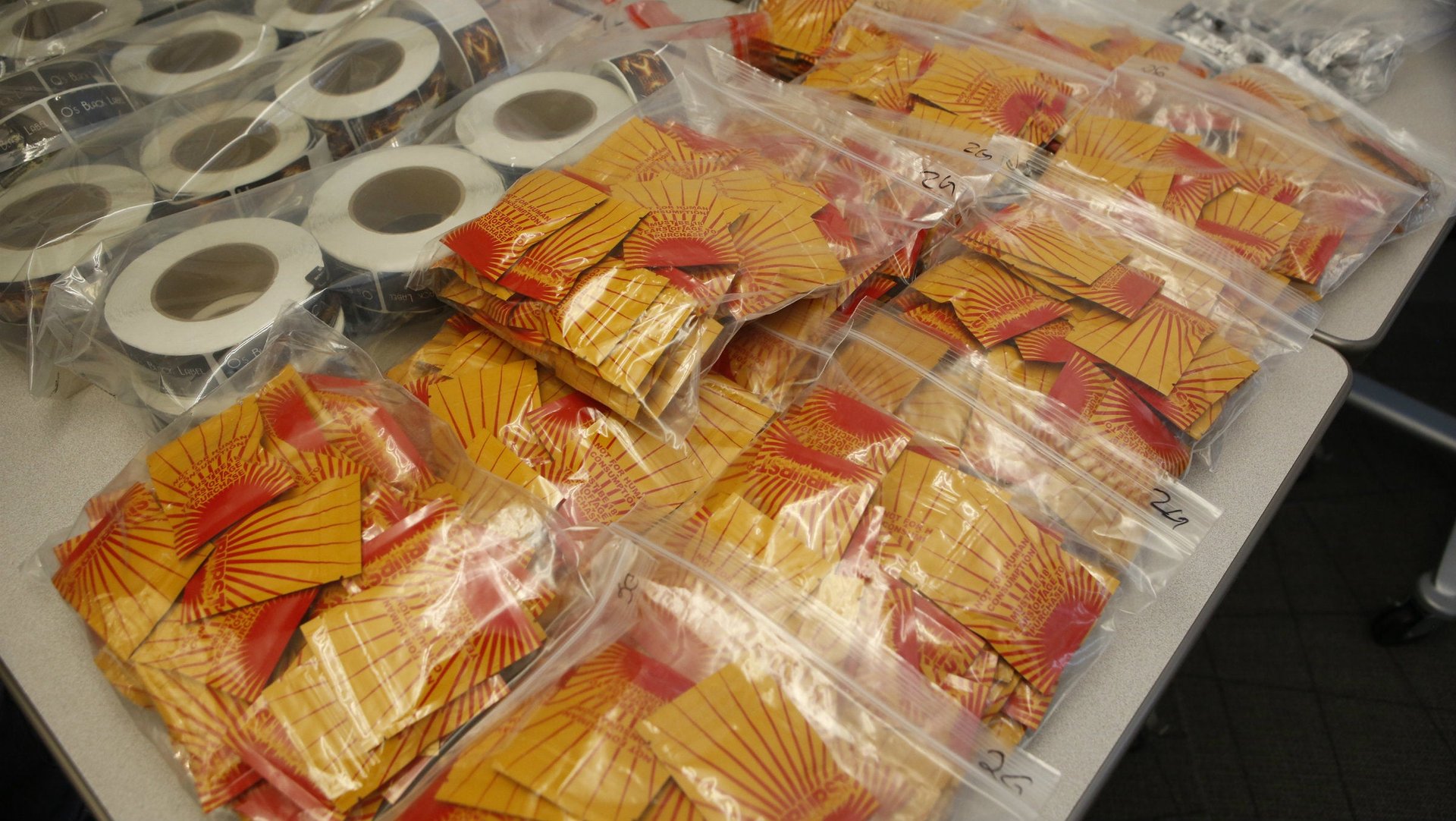The world is getting high on synthetic drugs like meow-meow, spice and V8
The world is awash in synthetic recreational drugs—the ones that are made in a lab, not grown in a field or a greenhouse—thanks to their growing popularity in China, strong demand in the US, and tiny labs in countries like Mexico and Thailand that are distributing them around the world. Methamphetamine is by far the most common synthetic, but a confounding new class of drugs is growing at what the United Nations calls an “unprecedented pace” in a report released May 19.


The world is awash in synthetic recreational drugs—the ones that are made in a lab, not grown in a field or a greenhouse—thanks to their growing popularity in China, strong demand in the US, and tiny labs in countries like Mexico and Thailand that are distributing them around the world. Methamphetamine is by far the most common synthetic, but a confounding new class of drugs is growing at what the United Nations calls an “unprecedented pace” in a report released May 19.
Called “new psychoactive substances,” or NPS, the drugs pose varying health threats but are hard to monitor and control because they’re often not classified as drugs or illegal substances in many countries. Often they are openly sold on the internet, sometimes as legal substitutes for illegal drugs.
Thanks to a combination of relatively anonymous internet sales and international courier services, these drugs are showing up all over, and confounding drug enforcement officials and drug treatment centers. It’s “a whole new world,” Sarah Charlton, the head of an addiction clinic in Hobart, Tasmania, told an Australian news site in March. “Half the time people don’t know what’s in them – it’s Russian roulette.” In April, police on the island of Jersey seized three kilos of NPS. “You have no idea what is in it and no idea what damage it will do to you,” inspector Craig Jackson said.
The UN Office on Drugs and Crime and its member countries have identified over 200 hundred new NPS in recent years:

Here are the NPS UN members encounter most often:
Synthetic cannabinoids: Produced to mimic the effects of THC, the active ingredient in marijuana, with names like “Spice” and “K2,” these drugs make up nearly 30% of the NPS reported to the UNODC in the past five years. While they are illegal in the US and increasingly in Europe and Asia too, they’ve proven tough to eliminate. Chemists have been known to scour scientific journals to find compounds “originally designed as research tools to investigate the properties of cannabinoid receptors,” Forbes reported this month.
“Meow-meow” or mephedrone: One of the synthetic cathinones, also referred to as “bath salts” that make up 25% of reported NPS use, the drug is supposed to produce “effects similar to those of both MDMA and cocaine” Rolling Stone reported, but has also been linked to violent self-mutilations.
V8 and Fast Lane: Common brand names that describe certain kinds of phenethylamines, a broad class of drug that is often sold online and promises to mimic the effects of drugs like cocaine and ecstasy. In 2013, the US Drug Enforcement Agency classified three hallucinogenic phenethylamines as schedule-I illegal drugs, saying they were linked to at least 19 deaths.